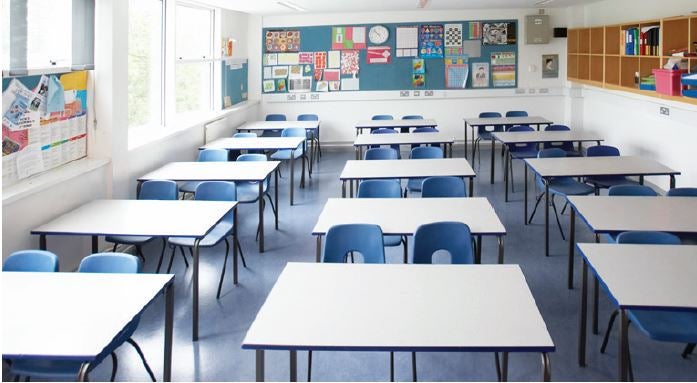
This winter holiday season was a time of festivities, recreation, and family, however it unfortunately also brought with it severe weather, disrupted travel plans, and a potential spread of illness. During a season of giving, germs were the one gift that no one wanted but likely received. Hopefully, the new year is off to a promising start with resolutions and good luck and not a new cough and cold.
New Year, New update on Cold and Flu
As much of the country has experienced high levels of cold and flu, the recent state of respiratory season has begun to look more optimistic. Illness levels have been declining for several weeks1 and RSV cases peaked in December2. The holiday season, usually followed by an increase in influenza-like illness (ILI), may mean an increase in sickness with the return to work and school.
With most schools opting to continue with only minimal prevention measures in place3, we shouldn’t be surprised at a slight uptick in sickness over the next several weeks. As respiratory pathogens like influenza, RSV, and rhinovirus remain circulating, it continues to be necessary to take steps to help protect against these illness-causing germs into the winter months.
While School’s In, Keep Germs Out
Surfaces contaminated from a cough or sneeze or touched with dirty hands can allow germs to spread to others and can even result in illness. Children’s busy hands can touch and retouch over 300 surfaces in as little as 30 minutes4. An easy way to help reduce the number of germs that spread in schools is through surface cleaning and disinfection.
A 2022 Clean Index study by CloroxPro found that out of 12 public spaces ranked for cleanliness, schools ranked 6th falling in the bottom half below restaurants and grocery stores5. Additionally, 1 in 3 Americans said they felt more comfortable going into schools before the pandemic5. The reality is that schools that aren’t clean are at increased risk for illness. School administrators with cleaning professionals have a responsibility to ensure school buildings and classrooms are kept healthy and safe.
To help schools slow the spread of illness, the CDC recommends the following considerations for cleaning and disinfection6:
1. Remove germs the right way. Understand the difference between cleaning, disinfecting, and sanitizing. Be mindful of what occasions and where each of these practices should be employed.
| Cleaning | Sanitization | Disinfection | |
| Definition | Physical removal of dirt, debris, and some germs from surfaces by scrubbing or wiping. | Lowers the number of germs on surfaces to a safe level by killing bacteria. | Kills or inactivates germs (bacteria and viruses) on surfaces or objects. |
| Application | Sweeping floors, dusting, and cleaning horizontal surfaces and countertops with cleaning product or soap and water. | Most often applicable in food service preparation areas. | Disinfect shared, frequently touched surfaces in high-traffic areas including classrooms, hallways, and bathrooms. |
2. Establish and follow procedures. Focus cleaning and disinfecting efforts on high touch surfaces and objects like desks, countertops and doorknobs. Follow the school’s set guidance on frequency and areas of focus.
3. Don’t overthink it. Routine cleaning and disinfection activities are sufficient when matched to the types of germs you want to remove or kill. During times of high disease transmission or an outbreak, rely on routine procedures instead of closing school or doing extra cleaning and disinfecting to help slow the spread of germs.
4. Use the right product in the right way. Review and follow cleaning and disinfectant product labels to ensure effectiveness against common germs such as influenza, rhinovirus and RSV. Allow surfaces to remain wet for the required time to kill germs. Be conscious about type of surface or object being cleaned and proceed according to the directions for use.
5. Make safety a priority. Anyone who uses cleaners and disinfectants should understand all instruction labels for safe and appropriate use. Heed hazard warnings, product directions, and PPE requirements before beginning. Avoid using disinfecting products near children while school is in session. Teachers and staff should wash hands after using or handling products. Additional instructional material and training should be available to staff as needed.
For guidance on daily and after-hours cleaning and disinfection for K–12 educational facilities, review the Environmental Cleaning & Disinfection Protocol Guide.
References
1. CDC. Weekly U.S. Influenza Surveillance Report [Internet]. [cited 2023 Jan 11]. Available from: https://www.cdc.gov/flu/weekly/index.htm
2. CDC. RSV National Trends – NREVSS [Internet]. [cited 2023 Jan 11]. Available from: https://www.cdc.gov/surveillance/nrevss/rsv/natl-trend.html
3. Kinsa Insights- Illness Report. Kinsa Illness Update: Week of Jan 1, 2023. [cited 2023 Jan 10].
4. Gerba, C. P. The Burden of Norovirus in Schools; Cengage Learning, 2016
5. CloroxPro. 2022 Clean Index Study. Data for this report was collected in an April 2022 online survey of a nationally representative U.S. General Population based on age, gender, region, race/ethnicity and income and cleaning industry professionals defined as business service contractors, facility managers in education, office buildings, medical facilities or gyms or infection preventionists.
6. CDC. How To Clean and Disinfect Schools To Help Slow the Spread of Flu [Internet]. [cited 2023 Jan 11]. Available from: https://www.cdc.gov/flu/school/cleaning.htm


